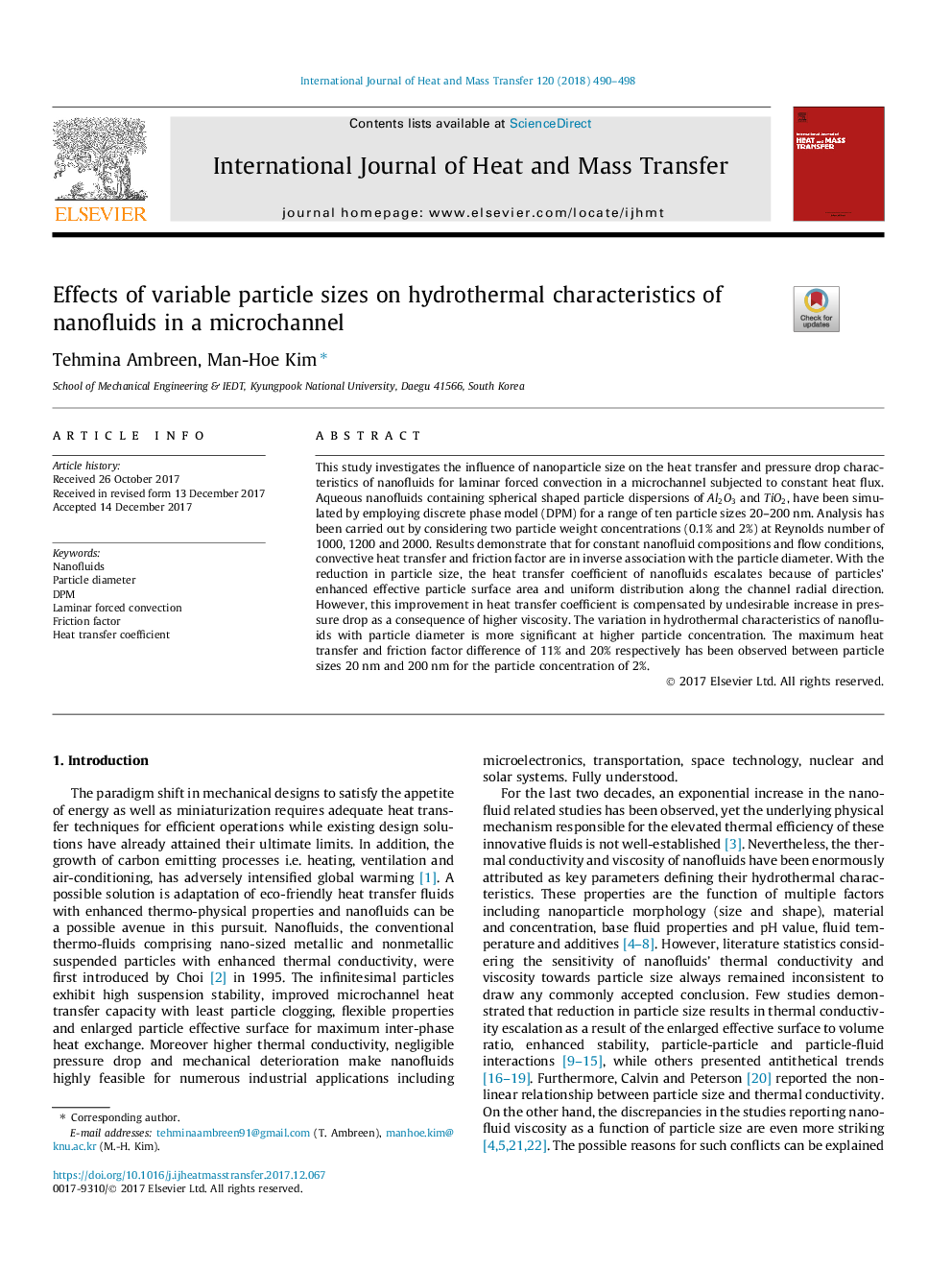| Article ID | Journal | Published Year | Pages | File Type |
|---|---|---|---|---|
| 7054597 | International Journal of Heat and Mass Transfer | 2018 | 9 Pages |
Abstract
This study investigates the influence of nanoparticle size on the heat transfer and pressure drop characteristics of nanofluids for laminar forced convection in a microchannel subjected to constant heat flux. Aqueous nanofluids containing spherical shaped particle dispersions of Al2O3 and TiO2, have been simulated by employing discrete phase model (DPM) for a range of ten particle sizes 20-200â¯nm. Analysis has been carried out by considering two particle weight concentrations (0.1% and 2%) at Reynolds number of 1000, 1200 and 2000. Results demonstrate that for constant nanofluid compositions and flow conditions, convective heat transfer and friction factor are in inverse association with the particle diameter. With the reduction in particle size, the heat transfer coefficient of nanofluids escalates because of particles' enhanced effective particle surface area and uniform distribution along the channel radial direction. However, this improvement in heat transfer coefficient is compensated by undesirable increase in pressure drop as a consequence of higher viscosity. The variation in hydrothermal characteristics of nanofluids with particle diameter is more significant at higher particle concentration. The maximum heat transfer and friction factor difference of 11% and 20% respectively has been observed between particle sizes 20â¯nm and 200â¯nm for the particle concentration of 2%.
Keywords
Related Topics
Physical Sciences and Engineering
Chemical Engineering
Fluid Flow and Transfer Processes
Authors
Tehmina Ambreen, Man-Hoe Kim,
